Features of landscape design of a narrow area
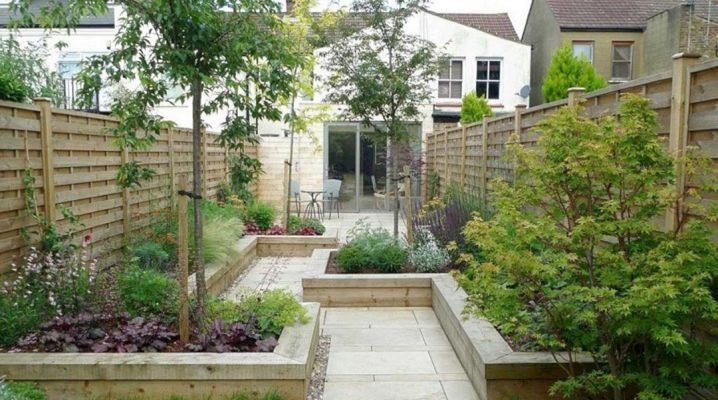
The acquisition and further decoration of a plot with a house is a joyful, but at the same time troublesome event, especially if the plot is of non-standard dimensions, for example, long and narrow. A well-designed landscape design will help to visually correct flaws and emphasize the advantages of such an unusual area.
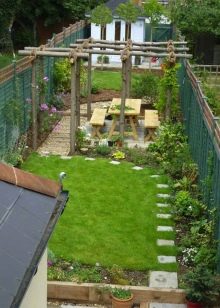
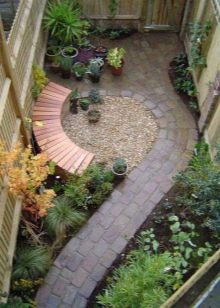
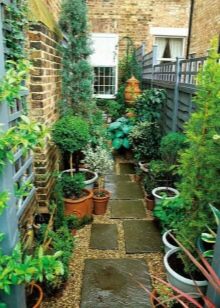
Correction techniques
Arranging a long and narrow section is not a super difficult task.
You just need to know the basic techniques of visual expansion of boundaries and not make typical mistakes.
These errors include:
- The presence of tall trees along the fence. This leads to the effect of an alley in the park and does not decorate the site in any way;
- During the construction of the site, not the entire area is involved. As a rule, the farthest corners and areas are left without attention and care. While in these places you can arrange objects and vegetation to visually expand the boundaries;
- Creation of straight paths, beds along the fences. This arrangement lengthens the site even more.
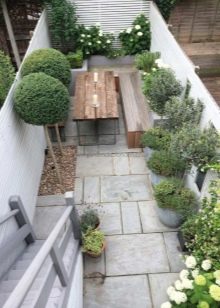
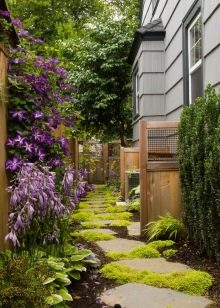
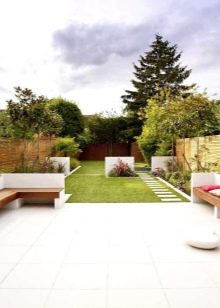
Using the basic correction techniques, you can create an area with a visually correct shape:
- Zoning;
- Visual convergence of distant borders;
- Multilevel design.
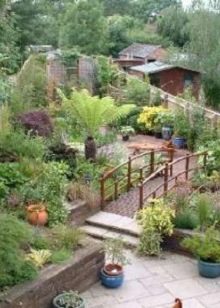

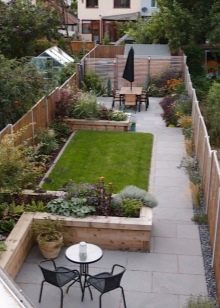
Space zoning is the simplest and most affordable way of correction. To do this, it is necessary to divide the entire area of the site into several zones and mark their boundaries using such means as hedges, various surfaces and paths with paths.
It is worth remembering that all separation goes across the fence. Blank boundaries in the form of concrete walls or high fences are not used. Stunted shrubs or flowers, hedges of climbing plants, as well as flower beds will look unusual in the form of plot dividers. A good reception is considered to be multilevel fences in the form of curbs, brick or wicker low fences, steps, concrete podiums.


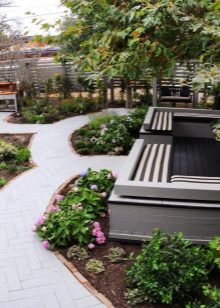
Different coverage will help not only visually expand the site, but also plant different types of plants.
The most popular combination is lawn and gravel or pebbles. Tiles, bricks, and sometimes concrete for paths are also used. In this case, the zones may not have clear boundaries, but smoothly flow from one area to another. Thus, a gravel path can be traced on a lawn, and an alpine slide or a "piece" of landscaping in the form of a lawn can be located on a pebble site.
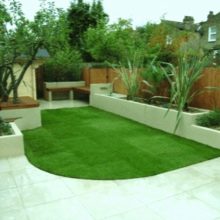
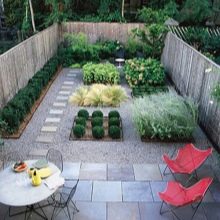
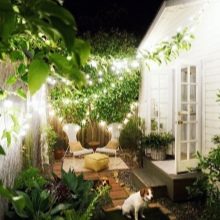
Paths or small paths can also be laid out throughout the site. It is desirable that they be curvy, contrasting in color or material.
In order to visually shorten the length of the section and give it a square shape, you need to use the techniques of bringing distant objects closer together. If a tall tree grows at the end of the site, then the best option would be to plant the same tree in front of it, but of a lower height. As for trees and bushes, it is better to give their crowns a rounded shape.
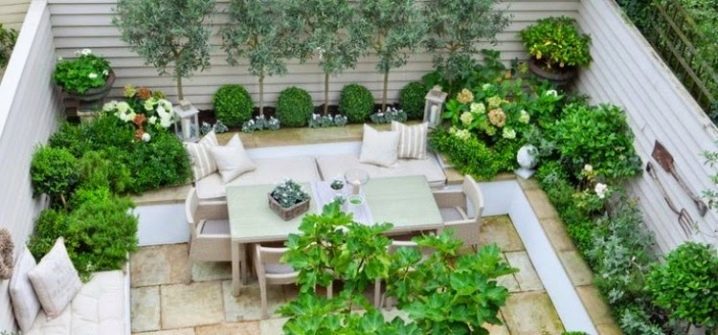
In order for the site not to seem so long, it is worth installing outbuildings, gazebos and sheds in the far zone. Arbors, pergolas are best surrounded by flowers or undersized shrubs. Instead of them, you can still install an alpine slide, a fountain, high flower beds. The presence of many sculptures, architectural small forms, located in a chaotic manner, also reduce the length of the site.
Multilevel arrangement of the site is one of the correct and uncomplicated ways. To do this, you need to place objects, shrubs, flowers at different heights.So, the design of the back platform with tall trees, and the foreground with small bushes will give the impression of an extended area. For the same purpose, you can use vegetation with pergolas in remote areas. In addition, you can use flower beds located at different levels, fountains or higher buildings and gazebos at the end of the site.
When decorating the territory, you can use not only the professional techniques of landscape designers, but also take into account the color specifics of plants.
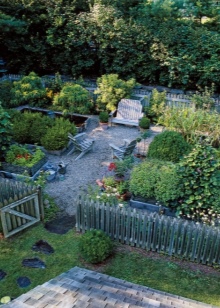
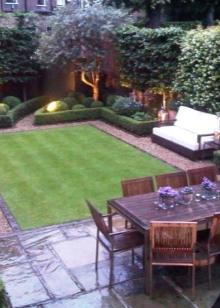
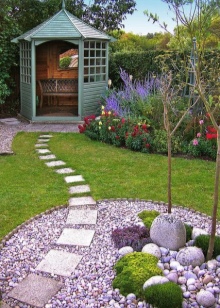
Color scheme
When creating a landscape on a long section, special attention should be paid to color design, since it plays an important role in the visual correction of the area. It is worth remembering that both shrubs and flowers are better to choose low ones. An exception is climbing plants for framing perimeters or arbors. Most of the plantings are best given for light or bright flowers (geranium, carnation, rose, tulip). You can focus on an object that is contrasting in color. It can be a light or bright red flower bed on a green lawn or a "fluffy" shrub in the center of a pebble zone.
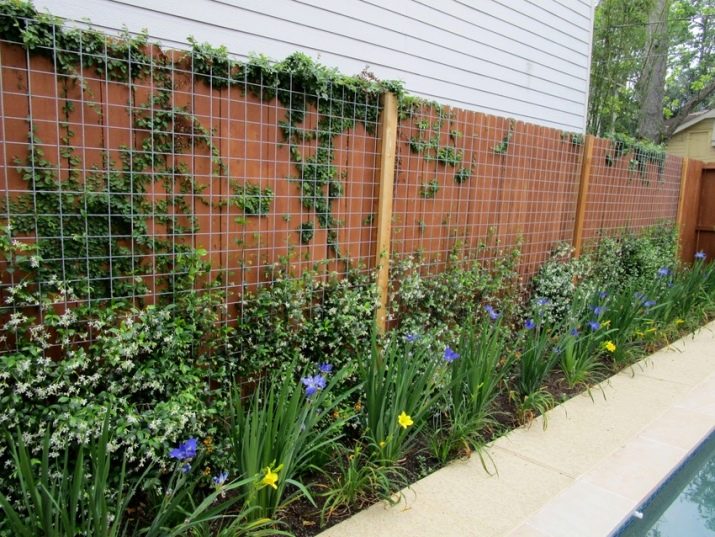
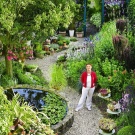
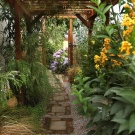
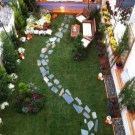

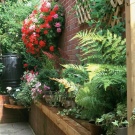
Bright flowers are best used at the end of the plot., as they visually shorten the length of the terrain. Flowers and vegetation of calm, light shades can be used to decorate the near zone. For this purpose, vegetation of blue, white, pink shades is most suitable. This contrast will expand the boundaries and create a harmonious atmosphere.
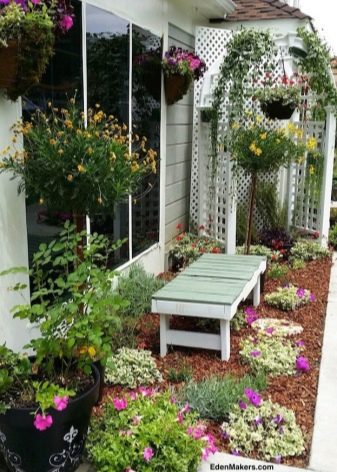
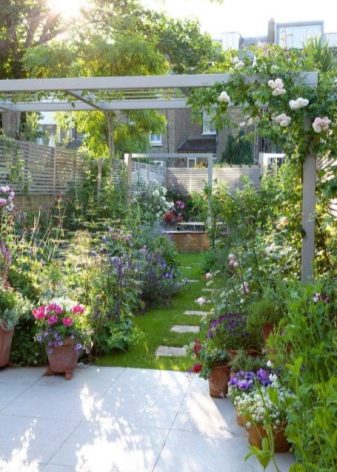
A plantation of coniferous shrubs or a pair of trees will give the territory a special look. Bushes can be placed along the fence or made a hedge for zoning the site. Trees are best placed in different corners of the plot if they are of the same height. Particular attention should be paid to the main path. It should be narrow at the beginning and widening as you move away. It is better to choose a contrasting material for the alley (if the lawn prevails, then lay out the path from gravel or rubble). Low garden lamps with round shades can be placed along the main alley.
A good solution would be to create flower beds with flowers of different colors in a checkerboard pattern. This technique will not only correct the area, but also give it an original look.
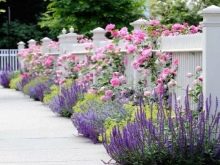
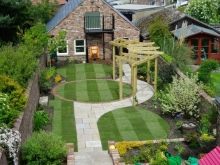
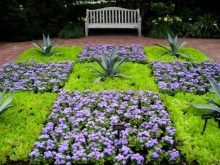
Recommendations
When arranging a site so unusual in shape, you need to know a few rules:
-
When designing, you should try to avoid straight, longitudinal lines, regular geometric shapes. It is better to give preference to winding lines and shapes without corners;
-
When decorating a site or path made of stone, pebbles, you can use a contrasting approach. To do this, you can lay out an ornament from a different color or texture of the material, or use a gradient;

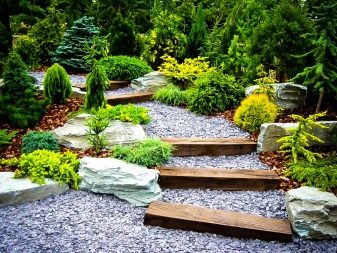
- When zoning, you should give the nearest site for a sports or playground. You can also place a decorative, or, if the terrain permits, a swimming pond. In this case, it is better to make it round, oval or unusual in shape. The same forms should be used to decorate the beds, flower beds and areas of the site;
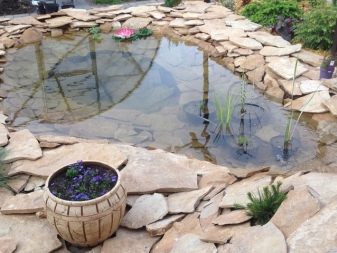
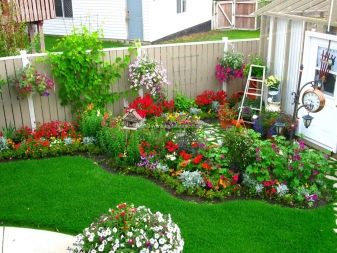
-
The fence must be made multilevel, since the monotonous fence will further extend the shape in length. When creating a fence, you can combine materials. For example, a wooden fence can be supplemented with climbing plants or alternated with shrubs;
-
To correct the site, you can use the beds and mixborder, which will be located along the paths or the main alley on the site;
-
Vegetable beds, flower beds are best placed across the fence. This will help to visually adjust the territory;


- When building a house or outbuildings, gazebos, special attention should be paid to their shape and location. The most harmonious is the rectangular shape. Moreover, in a small area, the building can be located along the entire site. As for the house, it can be built both as a carriage type and as a two-story building.The option of a small house with an annex in the form of an attic, a summer house and a large basement is possible.
-
Not only vegetation, but also buildings, paths, fountains, sculptures should be exposed to the correct color scheme.

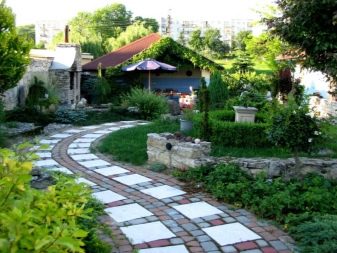
Buildings harmoniously formed in color and shape, vegetation will help turn a long section into a convenient and comfortable place to stay.
See the next video for more on this.



































































The comment was sent successfully.